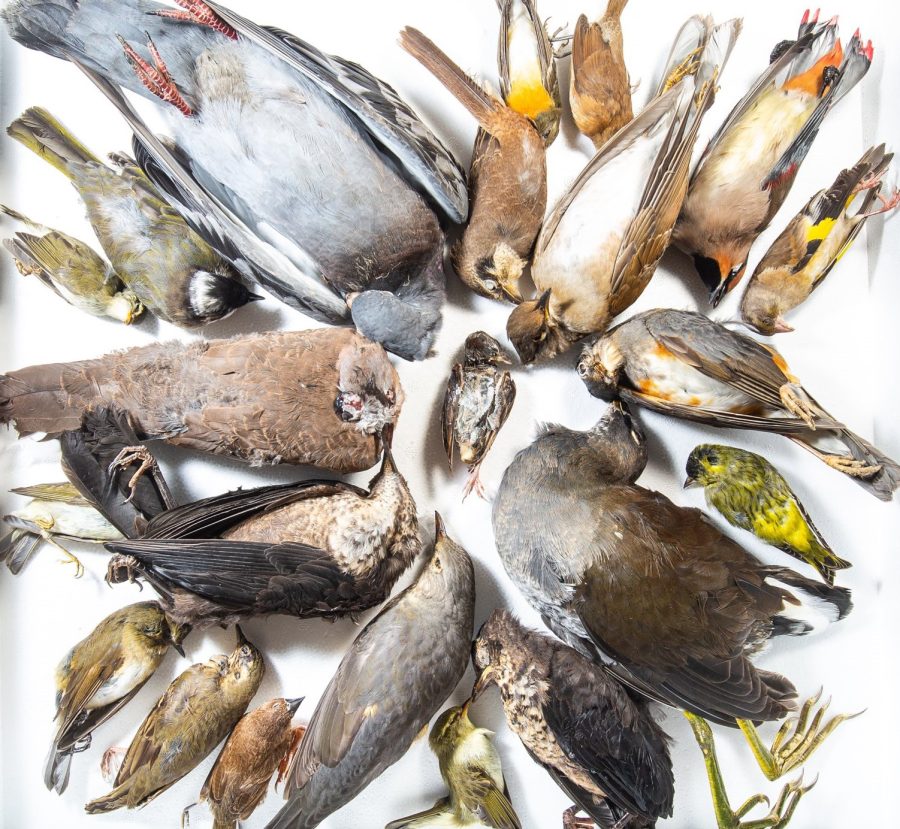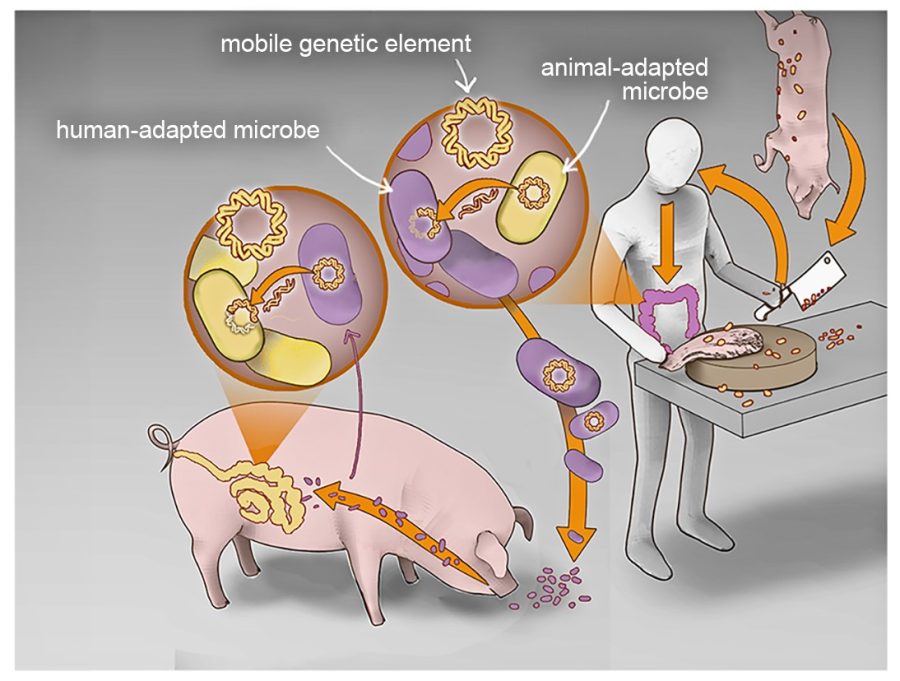ESA November Research News from Frontiers in Ecology and the Environment
For Immediate Release: Nov. 1, 2023, 12:00 PM EDT
Media Contact: Alison Mize, gro.asenull@nosila
Recent findings from Frontiers in Ecology and the Environment
“Sticky web” mentoring networks help retain women in STEM fields
Author contact: Paul R. Hernandez (ude.umatnull@zednanrehrp)
Mentoring relationships play a crucial role in the experience of women enrolled in STEM-related disciplines in college, but what qualities of mentorship are the most effective for encouraging female students to remain in these fields of study? Based on an analysis of a survey of 233 undergraduate women majoring in the Earth and environmental sciences at several universities across the US, the authors of this article concluded that mentoring networks that are large, cohesive, and focused on the development of discipline-related skills serve to form “sticky webs” of interpersonal connections that increase the likelihood of college women continuing to pursue careers in science. Greater retention of women in STEM-related fields through college will ultimately increase gender diversity in the professional sciences, in which women currently compose less than 30% of the workforce.
Why it matters: Improving understanding of mentorship network structures and qualities that promote retention of female students in STEM-related fields of study will help to increase diversity in the scientific workforce.
Read the article: Webs of science: mentor networks influence women’s integration into STEM fields
Lack of data impedes research on herptile response to land-cover change
Author contact: Javier Nori (moc.liamgnull@ironreivaj), Joaquín Hortal (se.cisc.ncnmnull@latrohj)
Developing effective conservation policies and actions for the world’s amphibians and reptiles requires a thorough understanding of how these species are affected by changes in land cover. In this article, the authors attempted to gain insight into how herptiles are responding to land conversion globally by comparing trends in herptile abundances over time in natural areas and altered lands, with a particular focus on regions experiencing rapid deforestation. What they discovered, however, is that, although availability varied geographically, the general paucity of data on herptile populations greatly impedes even this relatively straightforward comparison; on average, relevant population data were absent for 75% of amphibians and 83% of reptiles within each of the regional grid cells they established. Notably, population data were particularly scarce for species inhabiting the world’s deforestation hotspots. The authors stress that filling knowledge gaps about herptile population trends is critical for determining the impacts of land transformation on amphibians and reptiles, as well as for formulation of effective conservation and management strategies for these species during this time of rapid environmental change.
Why it matters: Insights into how herptiles respond to land transformation and subsequent implementation of effective conservation actions are greatly limited by an acute lack of information about population sizes and trends.
Read the article: Global knowledge gaps of herptile responses to land transformation
Bird–window collisions: who you gonna call? Citizen scientists!
Author contact: Scott R. Loss (ude.etatskonull@ssol.ttocs)

A small sample of birds killed by colliding with windows of buildings collected by citizen scientists in China. Photo credit: BV Li, published with Loss et al. (2023).
Hundreds of millions of birds are killed by colliding with windows each year in the US alone, and untold billions worldwide. Yet despite these staggering numbers, efforts to mitigate bird–window collisions have been limited, in part because the sheer scale of the problem poses a major challenge to conventional research techniques. To address this gap, researchers are increasingly turning to citizen scientists for data collection on bird-window collisions; as a consequence, citizen-science campaigns have now assumed leadership roles in advocating for the implementation of bird-friendly building regulations and policies, and in raising public awareness and education. In this article, the authors focus on several citizen-science-based programs in urban areas around the world to explore their contributions to scientific knowledge of bird–window collisions and discuss the obstacles these groups face in addressing this expanding threat to bird populations worldwide. Moreover, they reflect on the potential of citizen scientists for addressing other large-scale and widespread ecological and environmental issues.
Why it matters: Citizen-science programs have become primary sources of scientific knowledge about bird–window collisions worldwide, as well as global leaders in raising public awareness and education about this growing threat to bird populations.
Read the article: Citizen science to address the global issue of bird–window collisions
Microplastic pollution may lead to larger algal blooms
Author contact: Dominic McAfee (ua.ude.edialedanull@eefacm.cinimod)
Filter-feeding by oysters slows the growth of algal blooms that can form when excess nitrogen is transported from terrestrial sources into coastal seas via rivers, but new research suggests that this invaluable service provided by the world’s remaining oyster reefs – 85% of such reefs having been destroyed by human activity – is being undermined by yet another man-made pollutant: plastics. Analysis of plastic and nitrogen loads in the 25 most plastic-polluted rivers in the world revealed that plastic concentrations in these waterways are at levels high enough to interfere with oyster filter-feeding activity, potentially reducing the capacity of oyster reefs to offset the effects of elevated nitrogen on algae. The results of this study further underscore the urgent need to drastically reduce plastic and nitrogen pollution in the world’s rivers and coastal ecosystems.
Why it matters: Continual filtering of seawater by oysters can help keep algal blooms triggered by excessive levels of nitrogen in check, but this essential function is impaired when concentrations of microplastics also increase.
Read the article: Improving ecological function of polluted coasts under a tide of plastic waste
Antibiotic resistance exacerbated by poor environmental controls in low-income nations

Recurrent exchange of microbes between humans and animals – especially livestock, such as pigs – living in close contact is facilitating the emergence and spread of antibiotic-resistant pathogens in middle- and low-income countries. Graphic published with Nadimpalli et al. (2023).
Author contact: Maya L. Nadimpalli (ude.yromenull@illapmidan.l.ayam)
The lack of adequate water, sanitation, and hygiene infrastructure in many developing countries of the world facilitates microbial exchange between humans and animals and thus represents a largely neglected pathway contributing to the emergence and spread of antibiotic-resistant pathogens, propose the authors of a new study. In Cambodia, where human–animal interactions on farms and in markets are common and antibiotic use is essentially unregulated, the authors found that Escherichia coli in both humans and meat products contained identical mobile resistance elements and a conserved transposon region, evidence that insufficient environmental controls in combination with rampant antibiotic use create ideal conditions for the potential emergence and spread of drug-resistant genetic factors. Based on their findings, the authors argue that human–animal pathogen exchanges in underdeveloped countries represent “leaks” that must be considered if the growing threat of antibiotic resistance is to be curtailed.
Why it matters: Failure to recognize and address the underlying causes of human–animal microbial exchange in underdeveloped countries is hindering efforts to slow the global spread of antibiotic-resistant pathogens.
Read the article: Plugging the leaks: antibiotic resistance at human–animal interfaces in low-resource settings
###
The Ecological Society of America, founded in 1915, is the world’s largest community of professional ecologists and a trusted source of ecological knowledge, committed to advancing the understanding of life on Earth. The 9,000 member Society publishes six journals and a membership bulletin and broadly shares ecological information through policy, media outreach, and education initiatives. The Society’s Annual Meeting attracts 4,000 attendees and features the most recent advances in ecological science. Visit the ESA website at https://www.esa.org.